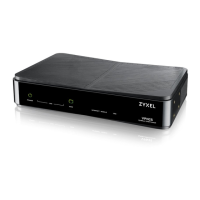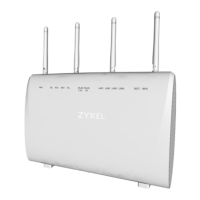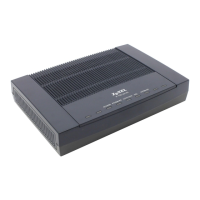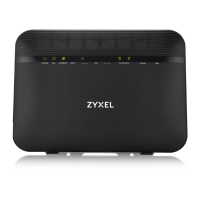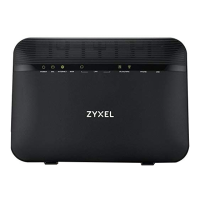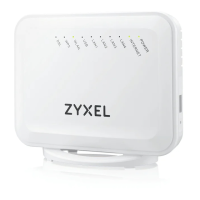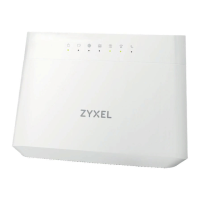Chapter 23 VLAN Stacking
VES1724-56 User’s Guide
210
23.3 VLAN Tag Format
A VLAN tag (service provider VLAN stacking or customer IEEE 802.1Q) consists of the following
three fields.
TPID (Tag Protocol Identifier) is a standard Ethernet type code identifying the frame and indicates
whether the frame carries IEEE 802.1Q tag information. The value of this field is 0x8100 as defined
in IEEE 802.1Q. Other vendors may use a different value, such as 0x9100.
Tunnel TPID is the VLAN stacking tag type the Switch adds to the outgoing frames sent through a
Tunnel Port of the service provider's edge devices (1 and 2 in the VLAN stacking example figure).
Priority refers to the IEEE 802.1p standard that allows the service provider to prioritize traffic
based on the class of service (CoS) the customer has paid for.
• On the Switch, configure priority level of inner IEEE 802.1Q tag in the Port Setup screen.
• "0" is the lowest priority level and "7" is the highest.
VID is the VLAN ID. SP VID is the VID for the second (service provider’s) VLAN tag.
23.3.1 Frame Format
The frame format for an untagged Ethernet frame, a single-tagged 802.1Q frame (customer) and a
“double-tagged” 802.1Q frame (service provider) is shown next.
Configure the fields as highlighted in the Switch VLAN Stacking screen.
Table 88 VLAN Tag Format
TPID Priority VID
Table 89 Single and Double Tagged 802.11Q Frame Format
DA SA Len/Etype Data FCS Untagged
Ethernet frame
DA SA TPID Priority VID Len/Etype Data FCS
IEEE 802.1Q
customer
tagged frame
DA SA Tunnel
TPID
Priorit
y
VID TPID Priority VID Len/Etype Data FCS
Double-tagged
frame
Table 90 802.1Q Frame
DA Destination Address Priority 802.1p Priority
SA Source Address Len/Etype Length and type of Ethernet frame
Tunnel TPID Tag Protocol IDentifier added on a tunnel port Data Frame data
VID VLAN ID FCS Frame Check Sequence
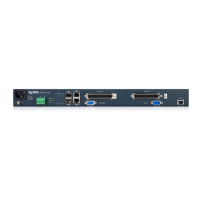
